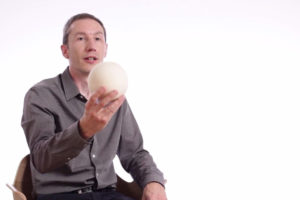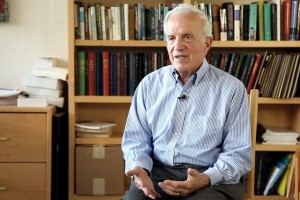What is Symmetry?
Physicist Xavier Bekaert on the properties of symmetry, homogeneity of universe, and why every point in the sp...
The Earth’s magnetosphere was one of the first discoveries of the Space Age. We knew that the Earth had a magnetic field, and we knew it varied a great deal, and we knew the Sun controlled the variations in the magnetic field, but really, until the Space Age, we didn’t know for sure that the Earth lives inside a magnetic cavity called the magnetosphere. The first discoveries of the magnetosphere were made with the first spacecraft in 1959 and 1960, a long time ago. We discovered that the Earth’s magnetic field extends out into space and makes a cavity around the Earth, but then, puzzlingly enough, it’s full of rather unpleasant high-energy radiation. In fact, an early space scientist said, ‘Space is radioactive!’
The science for me is very exciting. When I was a student, I had to choose: I wanted to study plasma physics and magnetohydrodynamics. I had two choices: one was to go into the laboratory and work on nuclear fusion because that was the hope of a future electricity supply; it still is; we have big amounts of international activity trying to make a fusion reactor that will be a very clean source of energy. But then the other alternative was to do plasmas in space. For me, I thought space was more exciting. The Earth’s magnetosphere is space very close to home, but it gives you a chance with spacecraft to look in detail at processes that could be far off in the cosmos. We have, if you like, astrophysics close to home. For me, that’s always been my first love about the magnetosphere of Earth: it has been the physics going on in this fourth state of matter. We know about solids, liquids, and gases, and there’s a fourth state called plasma, which is very hard to sustain on Earth because it has to have a high temperature.
But actually much of the universe is in the plasma state, so it’s actually normal if you were a truly cosmic being but it’s abnormal if you happen to live on the Earth as we do.
So, the Earth’s magnetosphere is the easiest place to get to, where it’s occurring naturally and where you can see processes going on. There’s a subtle coupling between the Sun and the Earth through the plasma processes that connect the Sun’s magnetic field with the Earth’s magnetosphere. I worked in a research group at Imperial College, which first really opened up the understanding of this and explained how the Earth’s magnetosphere coupled with the Sun.
For me, though, the real excitement is again in what the magnetosphere produces just naturally. I myself spent much of my early career working on the complicated waves that are called magnetohydrodynamic waves inside the magnetosphere. The magnetosphere is a closed volume, and so it’s like an echo chamber: there are these complicated waves that get excited when the Sun buffets the magnetosphere of Earth. That made me very happy for the first half of my career. I was working in that area.
So, I still see the magnetosphere as something we need to study; I still think this is a valid way to spend public money, and we should be exploring this. Some people say it’s just because of the impact because we live in a connected society where we all use electronic equipment, phones, televisions, communication systems, etc, all of which can be disrupted by magnetospheric weather. That, for me, is only part of the story. If we still can’t explain the whole system, I still see real basic science to do out there and that basic science, by and large, I feel has an impact beyond the Earth. My work on magnetohydrodynamic waves had an impact on how we saw waves in the solar atmosphere. Frankly, we’re doing astrophysics close to home. We can put spacecraft inside things we couldn’t dream of anywhere else in the universe; we should go on ensuring we explore this system around us: the Earth’s magnetosphere.

Physicist Xavier Bekaert on the properties of symmetry, homogeneity of universe, and why every point in the sp...

Geographer Anson Mackay on freshwater pollution, acid rains and the dangers of invasive species and algal bloo...

Physicist Daniel Kleppner on precise time measurements, gravitational field, and the Global Positioning System